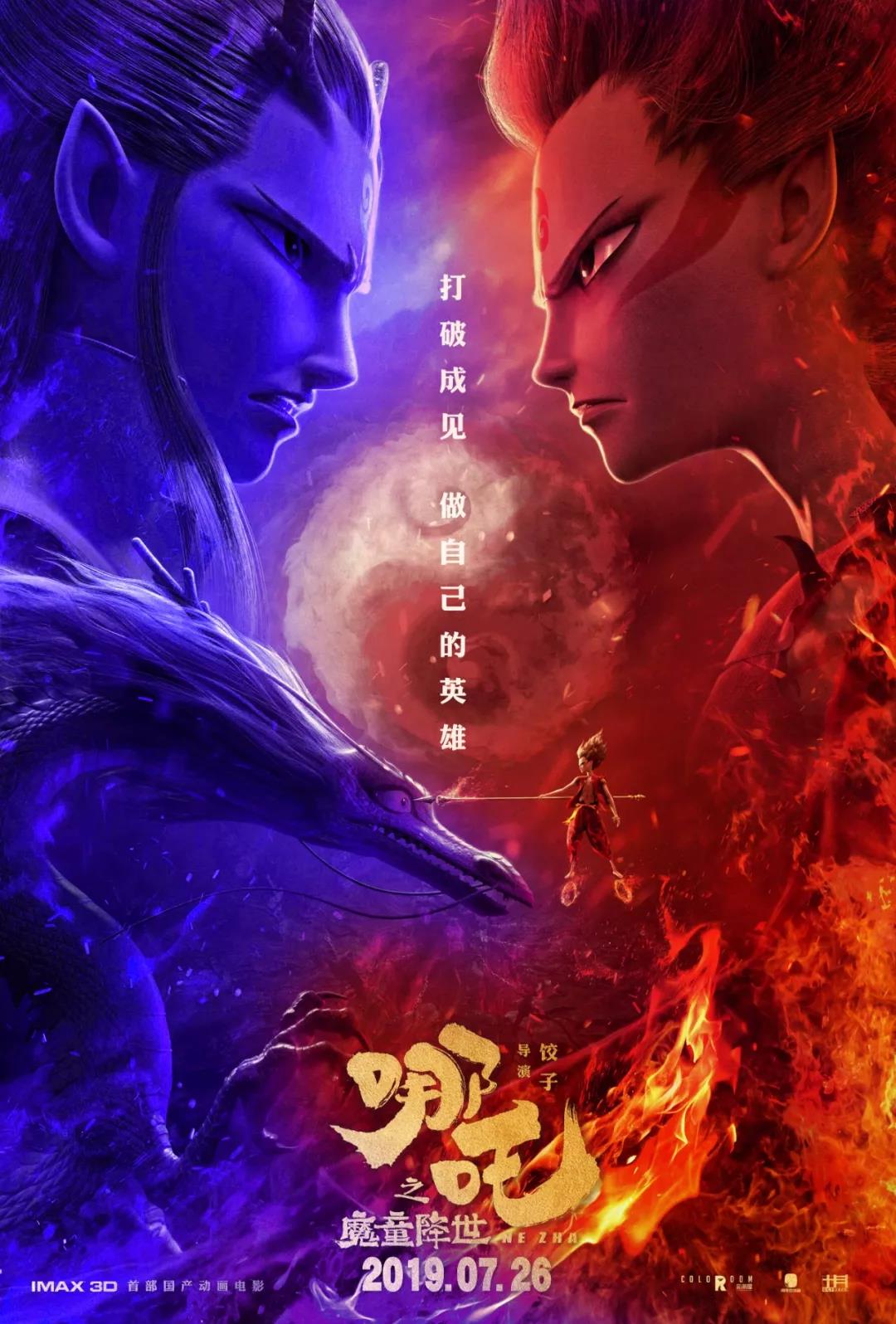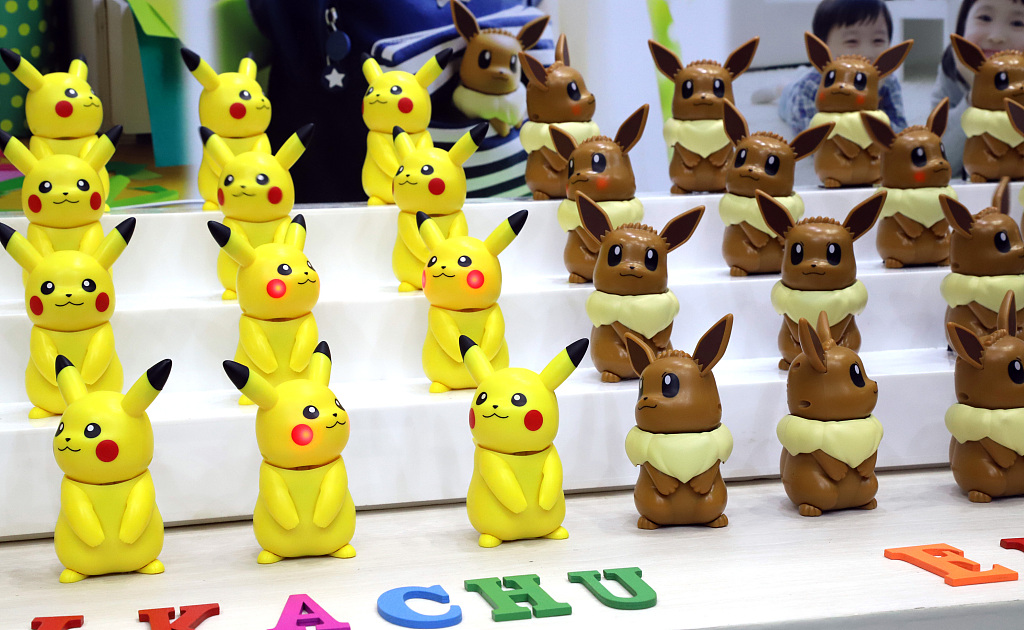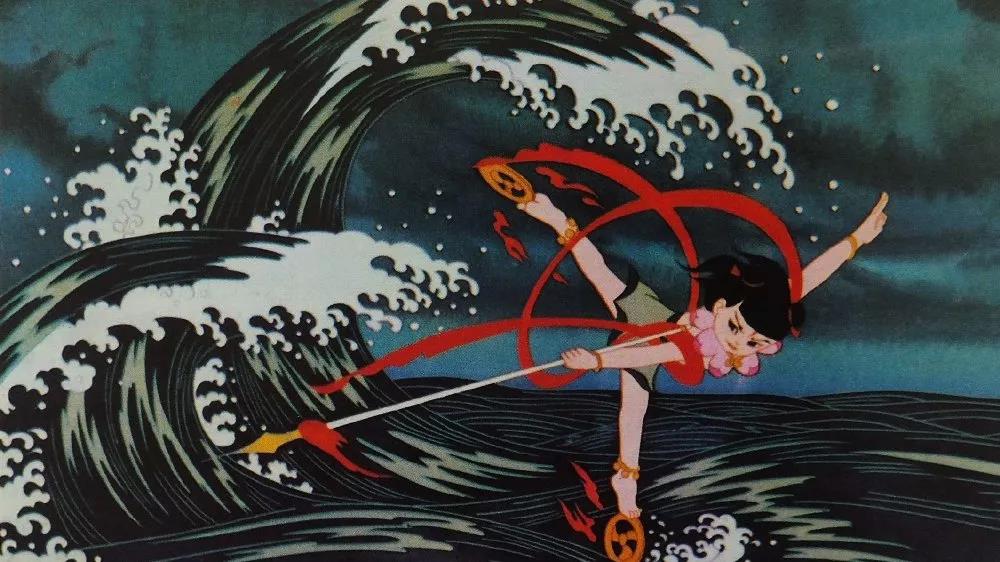Encircled by a thread of red silk, an attractive but rebellious teenager rides on wind-fire wheels and adeptly waves his fire-tipped spear.
Ne Zha is back. This legendary figure from Chinese mythology has returned to the silver screen after 40 years, winning rave reviews from Chinese audiences.

A poster for Ne Zha (Photos: Coloroom Pictures)
The home-grown Ne Zha, the first 3D animated film released in IMAX, overtook Disney's Zootopia in the all-time record books with a box office take of over $220 million on its eighth day in theaters, becoming China's biggest animated film ever. It also smashed other animated movie records in China, earning the biggest opening day, top single-day overall and the largest opening weekend.
The animated feature has passed milestones in China's film industry, and also generated both box office revenue and word of mouth buzz. It has drawn attention and aroused heated discussions online and offline. As time passes, more stories from behind the scenes become public, and more Chinese are starting to think deeply about the potential of the domestic animation industry.
Why Ne Zha became a big success
The adaptation has a brand new story giving Ne Zha a newly-designed image, toppling Chinese audiences' traditional expectations.
Ne Zha appears in the Chinese literary epic Journey to the West and is a central character in the ancient novel Investiture of the Gods, a historical myth depicting the downfall of the Shang dynasty and establishment of the Zhou dynasty involving mortals, gods, demons, fairies and spirits.
Traditionally Ne Zha was known for his fight against the patriarchy and autocracy. In the novel, he is a rebellious and irritable teenager who kills whoever gets in his way, and he has tense relations with his cowardly and selfish father, a garrison commander who governs a fictional port. Ne Zha is forced by his father to commit suicide and then is reborn as a mighty deity.
But in this movie, Ne Zha is a rebellious but righteous boy, who is hated, feared and shunned by local residents as the reincarnation of a devil. His childhood struggles make him long for others' company and acknowledgement. His relations with his parents are also changed from the original story. His father is willing to sacrifice himself to save Ne Zha's life, and inspires him to fight prejudice and social exclusion and to determine his own destiny. This gives the rebooted story an aura of warm and tenderness.

A poster for Ne Zha
The integration of Chinese traditional traits and modern elements contributed to the success of the animation.
The film has incorporated contemporary buzzwords, expressions, and gestures into a traditional myth. It has added regional features, like a figure's dialect from southwest China's Sichuan Province. The film's novel visual design fascinates moviegoers whose spontaneous outbursts of laughter saturate the whole cinema.
The dazzling scenes and special effects created by the detail-oriented production team are another plus for this film.
The pictures in the movie are brimming with Oriental aesthetics rather than imitating Western animation. Jiaozi, the film's director and screenwriter, revealed that he spent two years polishing the story and three years finishing the production. Ne Zha has more than 1,300 special effects shots, and it took more than 1,600 staff working at over 20 special effects studios to complete the movie’s backdrops, motion shots, and special effects.
Animation industry: A new driver for China’s economy
Ne Zha is not the only Chinese animation that raked in money and critical praise. Many other exquisite animations have impressed the market, like Monkey King: Hero is Back in 2015, Big Fish and Begonia in 2016, and White Snake in early 2019.
The success of recent years’ animated films has hiked expectations of a rise in the number of homegrown animated movies.
"Thanks to Ne Zha, we ultimately see a vast and fantasy-filled oriental continent, an extravaganza of tales and myths that belong to us," a moviegoer wrote on the Internet. The bonus scenes from Ne Zha anticipate a sequel, and a new animated film focusing on Jiang Ziya, another legendary figure in the same stories as Ne Zha, suggesting a Chinese mythological universe rivaling Marvel's Cinematic Universe is being created.
The rise of domestic animation will boost the development of China's animation industry, which is worth billion dollars.
Japan's animation industry took in $19.8 billion in 2017, largely driven by foreign demand. Exports of anime series and features tripled since 2014, and the momentum is still growing. The industry has also boosted other sectors, like tourism, retail, and services. Millions of fans from abroad have flocked to Japan to buy anime derivatives and visit the places that appear in anime. Similarly, Disney has earned billion dollars every year through animated films and its theme parks.

Japan's toy maker Tomy displays Pokemon's characters Pikachu and Eevee shaped robots which react to human voices at the annual International Tokyo Toy Show in Tokyo on June 13, 2019. (Photo: VCG)
China began to vigorously support the animation industry after entering the new century. Tax incentives and subsidies for original animated works have been introduced. Yet the animation industry is still immature and industrial chains need to be improved.
Many animators produced inferior works and utilized assessment loopholes to obtain subsidies, resulting in a flood of low-quality and homogeneous animation works in the market before 2014. China's animation products mostly stop generating income after they are shown in cinemas or on domestic television. They have not turned into valuable intellectual property or franchises. The application and exploitation of existing animation intellectual property has not yet formed a sophisticated ecosystem.
Animated films of recent years show the industry is heading in a favorable direction. More high quality animated films are being created, and animated films have gradually developed synergies with other businesses, like video games, theme parks, and merchandise. The animation industry has boosted consumption, becoming a new driver for China’s economy.
Homegrown animation: A new window for foreigners to know China
It is reported that an overseas version of Ne Zha with English subtitles is in production and will be released in markets outside China. The film may open a new chapter of shaping China's image and spreading Chinese culture.
Animation has proven effective at boosting other countries' images and spreading their cultures over the past decades. Japan and the US are the typical models.
Hollywood has dominated the global animation industry for a long time. It is very easy for anyone to name an animated film from Hollywood. Films like Universal Picture's Despicable Me and The Secret Life of Pets and Disney's animation empire including its princesses, superheroes, and talking animals have swept the whole world. American culture, fads, and values ride the express train of animated features to every corner of the earth.
Japan is a bigger beneficiary of an anime boost, rebranding itself from a global economy entity to an exporter of an exclusive artistic culture. Pokémon, for example, has ushered in a large anime wave around the globe. The television series has aired in over 100 states and regions, leading a lasting, worldwide Pokémon fever. Other commercial smashes like Astro Boy, Dragon Ball Z, and Spirited Away have projected a more specific and relatable image of Japan and Japanese to the outside world.
Unlike Japan and the US, China boasts exceptional strength in home-grown animation. The Chinese culture with its long history and its embedded virtues and values all provide inspirations for screenwriters. The abundant and various sources in Chinese literature and tradition offer a large pool of enthralling stories. This ensures domestic animated films can touch on assortments of themes varying from family and romance to sci-fi and philosophy, catering to all ages and tastes.
A good work can be recognized and appreciated by all people, breaking down the confines of ages, traditions, cultures and languages. China has already tried and succeeded.
In 1979, Prince Nezha's Triumph Against the Dragon King was the first widescreen color animation released in China. It is the first Chinese animated feature screened at the Cannes Film Festival and has won numerous foreign rave reviews. Miyazaki Hayao, the renowned Japanese animator, once acknowledged in a report that he had been influenced by Chinese early animation The Monkey King.

Screenshot from Prince Nezha's Triumph Against the Dragon King
The advance of home-grown animation, for one thing, helps spark the interest of modern Chinese people in classic literature and strengthen cultural confidence. It also provides a more human and tender way for foreigners to know China. As time goes on, the popularity of Chinese animated films may ultimately provide the world a prestigious image of China.
Generations of talented artists and decades of work ultimately built the empire of Hollywood. China needs to focus and strive to forge first-class stories and foster first-rate talent. Given time and patience, China will create a fantasy universe of oriental aesthetics and philosophy that makes Chinese proud and mesmerizes foreigners.


